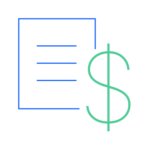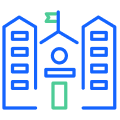How simplifying data can drive student achievement
With the rise of educational technology and adaptive online curriculum, personalized learning is now a reality in schools nationwide. According to a study released by the Bill & Melinda Gates Foundation, 93% of teachers in the U.S. use at least one online learning tool to guide instruction and drive student achievement. This near ubiquity of online learning creates opportunities for students to learn at their own pace and allows teachers the opportunity to target small groups for remedial instruction.
Yet, according to the same study, only half of teachers surveyed said they were comfortable with using those digital tools to drive student achievement. Over 50% of teachers believe the data from online programs is overwhelming, time-consuming, and inconsistent. Now, teachers are looking for tools that “simplify data management and empower students by giving them access to information about their progress and learning” (Gates).
Drowning in data
When teachers use multiple online learning programs, they are flooded with data points. This deluge of data “can lead teachers to feel overloaded with information on their students” (Gates). With so much data shared from a variety of platforms, teachers also struggle with the inconsistency of the information they receive. They spend considerable time adapting data so that it is comparable across the learning applications before they can act on it.
Ultimately, the drain on teachers’ time leads to underuse of the very resources that should support instruction. In 2016, Harvard University performed a study to measure the impact learning software had on student achievement. The research focused on a popular math application and measured, among other things, how much time students spent in the software. Researchers found that usage “often fell far short of the recommendation.” And for the students who spent more time in the application? They generally performed higher on state and interim assessments.
The main difference in students’ usage of the software “depended on the specific teacher working with them or the school they attended” (Harvard University Center for Education Policy Research). The study demonstrated that while online learning programs can drive student achievement, they only work if teachers are regularly using them with their students.
Starting with simplicity
To facilitate the use of learning programs, we need to give teachers a starting point so they can “separate the signal from the noise” (Gates). Two useful data points are students’ usage of the application (i.e. time spent completing assignments), and students’ progress in the application (i.e. number of lessons completed). With straight-forward goals and metrics around usage and progress, educators are better equipped to target struggling students, celebrate all-stars, and identify next steps.
According to a 2014 Harvard publication, setting clear goals doesn’t just simplify the planning process, it also increases motivation and achievement. When students track their daily progress with clear metrics, they increase their intrinsic motivation and the likelihood of their goal attainment.
The same holds true for principals and curriculum leads. When leaders have clear metrics to assess the efficacy and implementation of their online programs, they can better route resources and training to the schools and teachers that need it.
However, in practice, assessing the numerous applications with their individualized achievement data makes district-wide evaluation difficult. Rather than individually sifting through achievement data for all of the online applications, curriculum leaders need a way to assess a quick snapshot of program implementation across all of their schools and applications at once.
Finding a new frontier
This aggregation and analysis of data is Clever’s next frontier. “We’re incredibly proud of the work we’ve done to increase access to software, but we’ve also realized access is not enough,” Dan Carroll, one of Clever’s founders, says. “Research consistently shows that educational technology is most impactful if students use it regularly every week. But we’ve heard from schools and applications that getting that consistent usage across a school district is incredibly challenging.”
This month, Clever is rolling out a new product that will make great implementations of learning software easy. With clear goals around usage and progress, students, educators, and administrators will all be able to act on that data to drive instructional decisions.

More to read

December 23, 2025
End password chaos: The 5-step guide to secure, age-appropriate logins in schoolsSchool IT departments — take these 5 steps to offload the burden of manual password resets while improving cybersecurity for classrooms.
December 10, 2025
Wonde vs. Clever: 2025 Side-by-Side ComparisonWhen it comes to choosing the right edtech platform for your school or trust, there’s a lot to consider. Can it sync reliably with your Management Information System (MIS)? Support secure logins for every user, on every device? Scale across multiple schools without overloading your IT team? Wonde and Clever are two of the most […]

October 21, 2025
Stop the Sticky Notes: Bend-La Pine’s Simple, Secure Fix for Substitute Teacher AccessRobbie Faith, an instructional technology coach at Bend-La Pine Schools, successfully implemented a Clever feature to streamline secure access to digital resources for short-term substitutes, leading to more effective sub planning for teachers, increased confidence for subs, and more consistent learning for students.


















